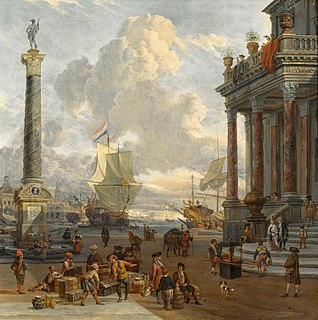 W
WThe history of international trade chronicles notable events that have affected the trade between various countries.
 W
WBanana boat is a descriptive nickname that was given to fast ships, also called banana carriers, engaged in the banana trade. They were designed to transport easily spoiled bananas rapidly from tropical growing areas to North America and Europe. They often carried passengers as well as fruit.
 W
WThe Cobden–Chevalier Treaty was an Anglo-French free trade agreement signed between Great Britain and France on 23 January 1860. After Britain began free trade policies in 1846, there remained tariffs with France. The 1860 treaty ended tariffs on the main items of trade – wine, brandy and silk goods from France, and coal, iron and industrial goods from Britain.
 W
WThe colonial molasses trade occurred throughout the seventeenth, eighteenth and nineteenth centuries in the European colonies in the Americas. Molasses was a major trading product in the Americas, being produced by enslaved Africans on sugar plantations on European colonies. The good was a major import for the British North American colonies, which used molasses to produce rum, especially distilleries in New England. The finished product was then exported to Europe as part of the triangular trade.
 W
WCurrency war, also known as competitive devaluations, is a condition in international affairs where countries seek to gain a trade advantage over other countries by causing the exchange rate of their currency to fall in relation to other currencies. As the exchange rate of a country's currency falls, exports become more competitive in other countries, and imports into the country become more and more expensive. Both effects benefit the domestic industry, and thus employment, which receives a boost in demand from both domestic and foreign markets. However, the price increases for import goods are unpopular as they harm citizens' purchasing power; and when all countries adopt a similar strategy, it can lead to a general decline in international trade, harming all countries.
 W
WA custom house or customs house was traditionally a building housing the offices for a jurisdictional government whose officials oversaw the functions associated with importing and exporting goods into and out of a country, such as collecting customs duty on imported goods. A custom house was typically located in a seaport or in a city on a major river, with access to an ocean. These cities acted as a port of entry into a country.
 W
WThe Danish–Icelandic Trade Monopoly was the monopoly on trade held by Danish merchants in Iceland in the 17th and 18th centuries. Iceland was during this period a territory controlled by the Danish Crown. The origins of the monopoly may be traced to the mercantilist policies of Denmark, and its aim was to support Danish merchants and Danish trade against the Hanseatic League of Hamburg, increasing the power of the King of Denmark in Iceland.
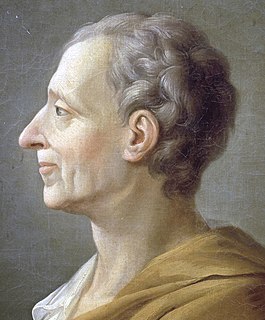 W
WDoux commerce is a concept originating from the Age of Enlightenment stating that commerce tends to civilize people, making them less likely to resort to violent or irrational behaviors. This theory has also been referred to as commercial republicanism.
 W
WThe Dutch East India Company, officially the United East India Company, was a megacorporation founded by a government-directed consolidation of several rival Dutch trading companies in the early 17th century. It is believed to be the largest company to ever have existed in recorded history. It was established on March 20, 1602, as a chartered company to trade with Mughal India in the early modern period, from which 50% of textiles and 80% of silks were imported, chiefly from its most developed region known as Bengal Subah. In addition, the company traded with Indianised Southeast Asian countries when the Dutch government granted it a 21-year monopoly on the Dutch spice trade.
 W
WFactory was the common name during the medieval and early modern eras for an entrepôt – which was essentially an early form of free-trade zone or transshipment point. At a factory, local inhabitants could interact with foreign merchants, often known as factors. First established in Europe, factories eventually spread to many other parts of the world.
 W
WThe Genoa Economic and Financial Conference was a formal conclave of 34 nations held in Genoa, Italy, from 10 April to 19 May 1922 that was planned by British Prime Minister David Lloyd George to resolve the major economic and political issues facing Europe and to deal with the pariah states of Germany and Russia, both of which had been excluded from the Paris Peace Conference of 1919. The conference was particularly interested in developing a strategy to rebuild a defeated Germany, as well as Central and Eastern European states, and to negotiate a relationship between European capitalist economies and the new Bolshevik regime in Soviet Russia. However, Russia and Germany signed the separate Treaty of Rapallo (1922), and the result at Genoa was a fiasco with few positive results. However, the conference came up with a proposal for resuming the gold standard that was largely put in place by major countries.
 W
WA gold standard is a monetary system in which the standard economic unit of account is based on a fixed quantity of gold. The gold standard was the basis for the international monetary system from the 1870s to the early 1920s, and from the late 1920s to 1932 as well as from 1944 until 1971 when the United States unilaterally terminated convertibility of the US dollar to gold foreign central banks, effectively ending the Bretton Woods system. Many states still hold substantial gold reserves.
 W
WThe Hanseatic League was an influential medieval commercial and defensive confederation of merchant guilds and market towns in central and northern Europe. Growing from a few north German towns in the late 12th century, the League ultimately encompassed nearly 200 settlements across seven modern-day countries; at its height, it stretched from the Netherlands in the west to Russia in the east, and reached as far north as Swedish Gotland and as far south as Kraków, Poland.
 W
W"The Imperialism of Free Trade" is an academic article by John Gallagher and Ronald Robinson first published in The Economic History Review in 1953. The article was influential in the debate concerning the causes of British imperial expansion in the 19th-century which, since John A. Hobson's Imperialism: A Study (1902), had focused on economic motivation. Instead, Gallagher and Robinson claimed that the New Imperialism – "the new spate of imperial expansion that gathered momentum from the 1880s" – could be best characterised as a continuation of a longer-term policy begun in the 1850s in which informal empire, based on the principles of free trade, was favoured over formal imperial control unless circumstances made such rule impossible. As well as reigniting scholarly interest in theorizing New Imperialism, the article helped launch the Cambridge School of historiography.
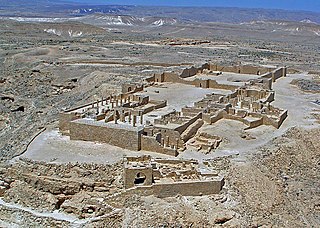 W
WIncense Route – Desert Cities in the Negev is a World Heritage-designated area near the end of the Incense Route in the Negev, southern Israel, which connected Arabia to the Mediterranean in the Hellenistic-Roman period, proclaimed as being of outstanding universal value by UNESCO in 2005. The trade led to the development of ancient towns, forts and caravanserai en route, apart from agricultural development.
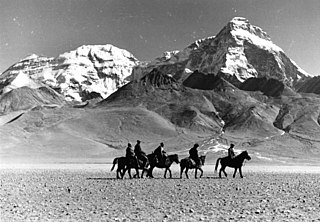 W
WLhasa Newar refers to the expatriate Newar traders and artisans who traveled between the Kathmandu Valley and Tibet from centuries ago. These Nepalese merchants conducted trade between Nepal, Tibet and Bengal, India over the Silk Road, and acted as a bridge for economic and cultural exchanges between South Asia and Central Asia.
 W
WA muda was the convoy of merchant ships that usually left Venice in spring and came back in autumn.
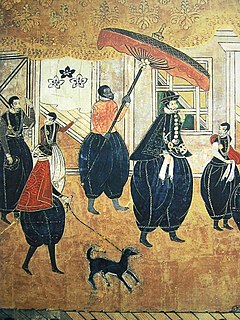 W
WThe Nanban trade or Nanban trade period , was a period in the history of Japan from the arrival of Europeans in 1543 to the first Sakoku Seclusion Edicts of isolationism in 1614. Nanban is a Japanese word which had been used to designate people from Southern China, Ryukyu islands, Indian Ocean and Southeast Asia centuries prior to the arrival of the first Europeans. For instance, according to the Nihongi ryaku (日本紀略), Dazaifu, the administrative center of Kyūshū, reported that the Nanban pirates, who were identified as Amami islanders by the Shōyūki, pillaged a wide area of Kyūshū in 997. In response, Dazaifu ordered Kikaijima (貴駕島) to arrest the Nanban.
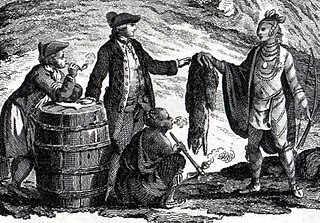 W
WThe North American fur trade refers to the commercial trade in furs in North America. Various indigenous people of the Americas traded furs with other tribes during the pre-Columbian era. Europeans started their participation in the North American fur trade from the initial period of their colonization of the Americas onward, extending the trade's reach to Europe. European merchants from France, England and the Dutch Republic established trading posts and forts in various regions of North America to conduct the trade with local indigenous tribes. The trade reached the peak of its economic importance in the 19th century, by which time it relied upon elaborately developed trade networks.
 W
WThe Oriental Development Company, established by the Empire of Japan in 1908, was a national enterprise built as a colonial exploitation policy towards the Korean Empire and other countries in East Asia. The company was headquartered first in Seoul, then in Tokyo.
 W
WThe Payne–Aldrich Tariff Act of 1909, named for Representative Sereno E. Payne (R–NY) and Senator Nelson W. Aldrich (R–RI), began in the United States House of Representatives as a bill raising certain tariffs on goods entering the United States. The high rates angered Republican reformers, and led to a deep split in the Republican Party.
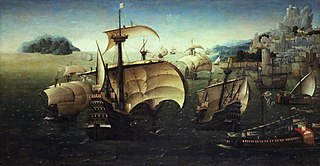 W
WThe Portuguese Indian Armadas were the fleets of ships funded by the Crown of Portugal, and dispatched on an annual basis from Portugal to India, principally Goa, and previously to Cochin. These armadas undertook the Carreira da Índia from Iberia, following the maritime discovery of the Cape route, to the Indian Subcontinent by Vasco da Gama in 1497–1499.
 W
WScottish trade in the early modern era includes all forms of economic exchange within Scotland and between the country and locations outwith its boundaries, between the early sixteenth century and the mid-eighteenth. The period roughly corresponds to the early modern era, beginning with the Renaissance and Reformation and ending with the last Jacobite risings and the beginnings of the Industrial Revolution.
 W
WScottish trade in the Middle Ages includes all forms of economic exchange in the modern boundaries of Scotland and between that region with outside locations, between the departure of the Romans from Britain in the fifth century and the establishment of the Renaissance in the early sixteenth century. There are not the detailed custom accounts for most of the period that exist for England, that can provide an understanding of foreign trade. In the early Middle Ages the rise of Christianity meant that wine and precious metals were imported for use in religious rites. Imported goods found in archaeological sites of the period include ceramics and glass, while many sites indicate iron and precious metal working. The slave trade was also important and in the Irish Sea it may have been stimulated by the arrival of the Vikings from the late eighth century.
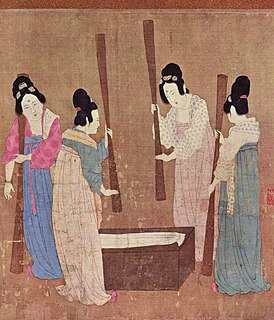 W
WThe production of silk originated in Neolithic period China within the Yangshao culture. Though it would later reach other places in the world, the art of silk production remained confined to China until the Silk Road opened at 114 BC, though China maintained its virtual monopoly over silk production for another thousand years. The use of silk within China was not confined to clothing alone, and silk was used for a number of applications, such as writing. Within clothing, the color of silk worn also held social importance, and formed an important guide of social class during the Tang dynasty.
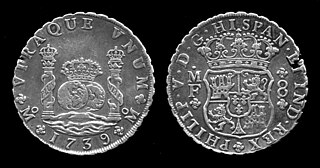 W
WThe silver standard is a monetary system in which the standard economic unit of account is a fixed weight of silver. Silver was far more widespread than gold as the monetary standard worldwide, from the Sumerians c. 3000 BCE until 1873. Following the discovery in the 16th century of large deposits of silver at the Cerro Rico in Potosí, Bolivia, an international silver standard came into existence in conjunction with the Spanish pieces of eight. These silver dollar coins played the role of an international trading currency for nearly four hundred years.
 W
WDuring the Spanish colonization of the Americas, the Spanish Main was the collective term for the parts of the Spanish Empire that were on the mainland of the Americas and had coastlines on the Caribbean Sea or Gulf of Mexico. The term was used to distinguish those regions from the numerous islands Spain controlled in the Caribbean, which were known as the Spanish West Indies.
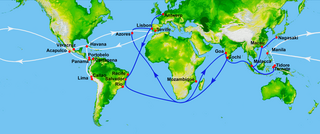 W
WThe Spanish treasure fleet, or West Indies Fleet Spanish: Flota de Indias, was a convoy system of sea routes organized by the Spanish Empire from 1566 to 1790, which linked Spain with its territories in the Americas across the Atlantic. The convoys were general purpose cargo fleets used for transporting a wide variety of items, including agricultural goods, lumber, various metal resources such as silver and gold, gems, pearls, spices, sugar, tobacco, silk, and other exotic goods from the overseas territories of the Spanish Empire to the Spanish mainland. Spanish goods such as oil, wine, textiles, books and tools were transported in the opposite direction.
 W
WThe spice trade involved historical civilizations in Asia, Northeast Africa and Europe. Spices such as cinnamon, cassia, cardamom, ginger, pepper, nutmeg, star anise, clove and turmeric were known and used in antiquity and traded in the Eastern World. These spices found their way into the Near East before the beginning of the Christian era, where the true sources of these spices were withheld by the traders and associated with fantastic tales.
 W
WVermeer's Hat: The Seventeenth Century and the Dawn of the Global World is a book by the Canadian historian Professor Timothy Brook, in which he explores the roots of world trade in the 17th century through six paintings by the Dutch Golden Age painter Johannes Vermeer. It focuses especially on growing ties between Europe and the rest of the world and the impact of China on the world, during what Brook sees as an "age of innovation" and improvisation.
 W
WThe Westline is a fictional line describing the movement of the commercial centre of maritime trade over the past 5000 years.